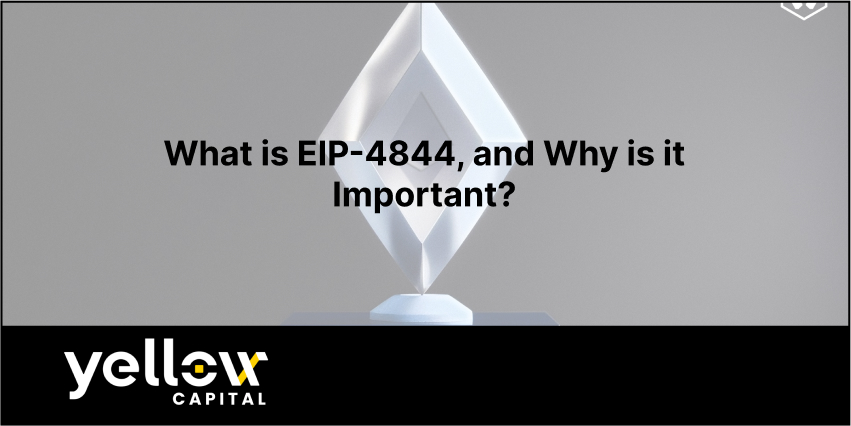- August 8, 2024
- Category: Crypto

Ethereum, along with Bitcoin, is the most important part of the crypto market. Together, they are responsible for almost 70% of crypto market capitalization. Although the Ethereum blockchain is crucial for the ecosystem, it still has challenges that most market participants can’t wait to be fixed. These challenges are high transaction fees (gas) and low bandwidth.
What is Danksharding?
Ethereum will be divided into 64 shards connected to the coordination chain — Beacon Chain.
Instead of one sequential chain, in which each node must load each transaction, there will be a coordinating Beacon Chain and associated shards that process transactions in parallel.
Proto-Danksharding
So on March 13, 2024, with Dencun upgrade, Ethereum network adopted EIP-4844 – with the mission to implement proto-danksharding in Ethereum network — a preliminary stage that should introduce the main changes necessary for a full-fledged start of dunksharding in the future.

Scalability Challenge
Ethereum’s scalability issues arise from the limited throughput and storage capacity of Ethereum mainnet, also known as the execution layer. As more dApps and users join the network, the demand for processing transactions and storing data has skyrocketed, leading to higher transaction fees and slower confirmation times.
One of the primary bottlenecks is the storage and processing of large amounts of data associated with various dApps and layer-2 scaling solutions like rollups and sharding. These applications often require storing and processing large datasets, such as non-fungible token (NFT) metadata, decentralized finance (DeFi) data, and state updates for rollups. Storing and processing this data on the main Ethereum chain can be inefficient and costly, worsening the scalability issues.
Introducing EIP-4844
EIP-4844, or Ethereum Improvement Proposal 4844, is a solution that addresses the scalability challenges Ethereum network faces and pursues 2 goals:
To prepare for the implementation of sharding: For this, it is planned to implement a new transaction logic necessary for the implementation of sharding, make changes to the Beacon chain and beacon nodes, divide the verification of transactions into beacon blocks, and introduce large binary objects.
To reduce the cost of gas for L2: both the new structure of transaction data and the launch of a mechanism for dynamically regulating the cost of gas for large binary objects will contribute to this goal.
The authors of the EIP are Ethereum co-founder Vitalik Buterin, as well as developers Dankrad Feist, Diderik Loeracker, George Kadianakis and Matt Garnett.
The innovations
The biggest innovation of EIP-4844 is a new type of transaction called shard blob transactions, or blobs.
Blobs are collections of data in which complete information about a block of L2 transactions is recorded. At the same time, the blob is stored outside the execution layer; EVM does not have direct access to the data in the blob.
Shard blob transactions work by splitting the data into smaller chunks, called blobs (Binary Large Objects), and distributing these blobs across a subset of nodes on Ethereum network. This distribution process is facilitated by a mechanism called “data availability sampling,” which randomly selects a subset of nodes to validate and store the data blobs.
KZG is a proof of commitment that will be used in Ethereum dunksharding. If simplified as much as possible, KZG shows that the specific value at this point equals the declared value.
EIP-4844 Effect
We explored the technical advantages of EIP-4844 for the network, and let’s explore how it will affect the users:
Fees in Ethereum mainnet change slightly: data sharding itself is not implemented in EIP-4844, which means that all nodes need to load all transactions, as before, so network bandwidth and fees remain the same.
Layer 2 networks fees dropped significantly: The introduction of temporary blobs instead of the calldata function reduced the cost of recording transactions. In combination with a dynamic mechanism for regulating the price of gas for recording blobs, this led to a decrease in commissions in L2 networks based on optimistic or zk-rollups.
Although EIP-4844 is not a solution to reduce fees and increase the bandwidth of Ethereum Blockchain, it is a key step toward solving these problems and pushing ETH to greater adoption.
Add a comment
You must be logged in to post a comment.

